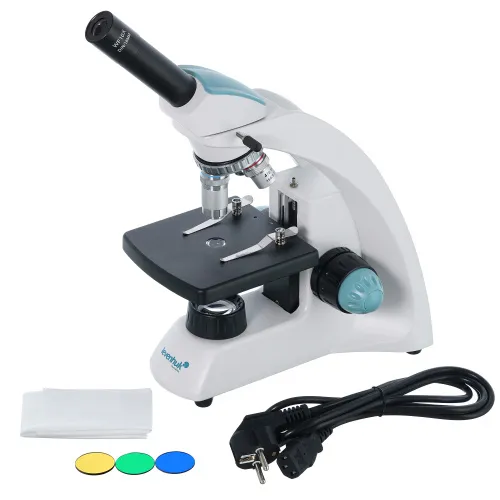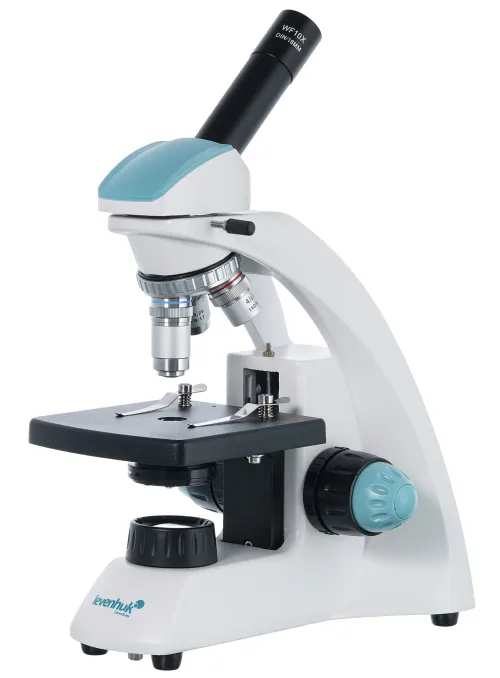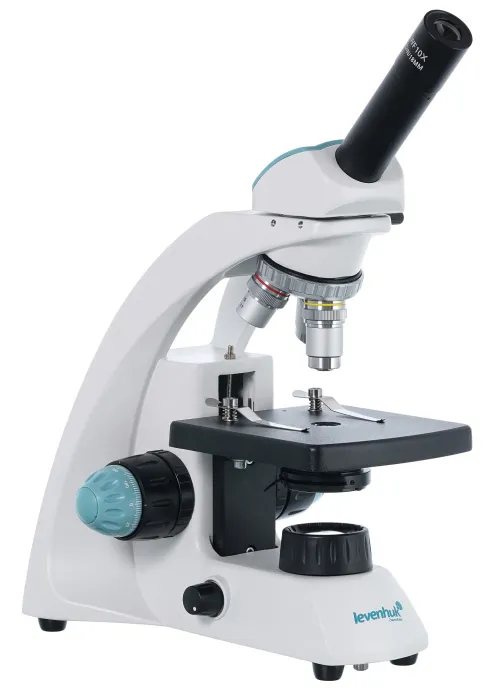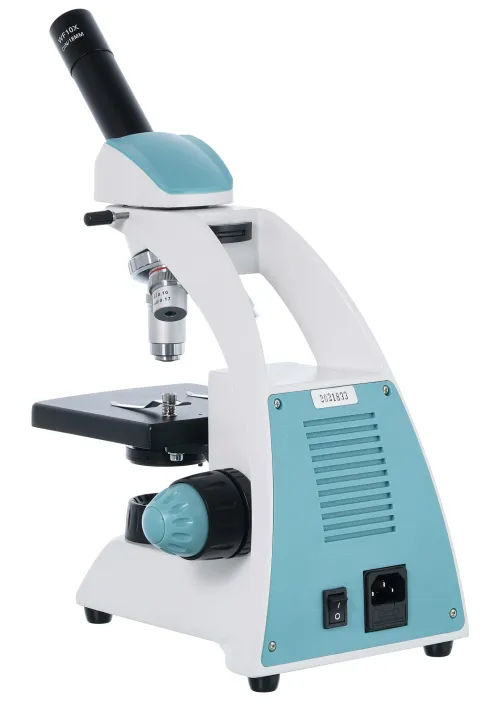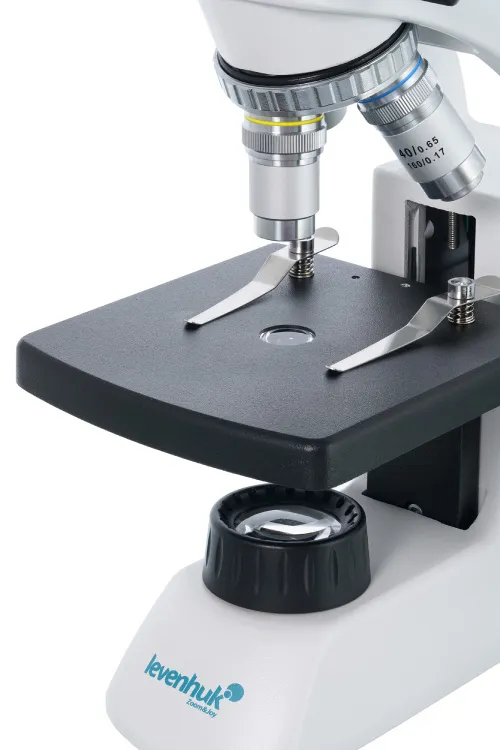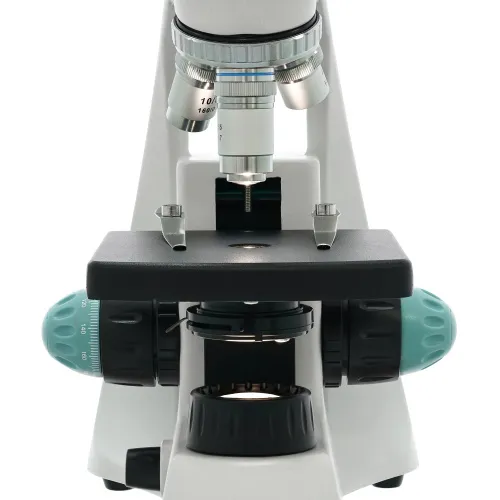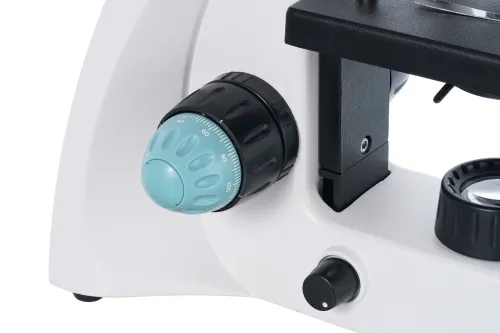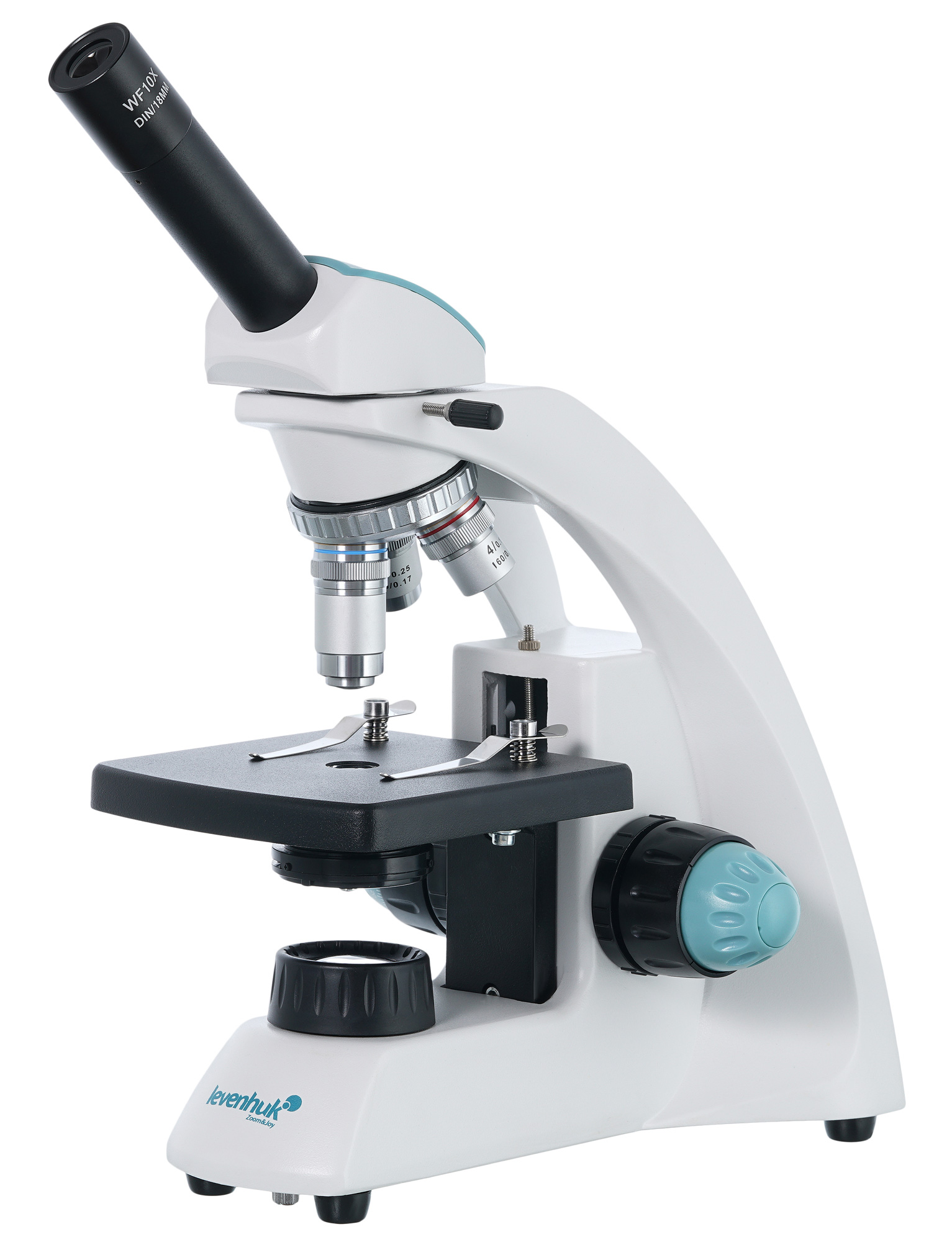Levenhuk 500M Monocular Microscope
Magnification: 40–400x. Monocular head, achromatic objectives, halogen light with a collector
| Product ID | 75424 |
| Brand | Levenhuk, Inc., USA |
| Warranty | lifetime |
| EAN | 5905555005294 |
| Package size (LxWxH) | 42x26x33 cm |
| Shipping Weight | 3.9 kg |
The Levenhuk 500M laboratory microscope is a perfect choice for work in the field of histology or any other microscopy research that requires staining samples. Due to halogen lighting, the microscope delivers brighter colors and makes observed microscope slides more contrasted. This microscope is excellent for any bright field microbiological research in incident light.
A monocular head is conveniently inclined at 45° and is 360° rotatable. A wide-field eyepiece with 10x magnification provides a good view. The achromatic objectives magnify 4, 10, and 40 times. The 40x objective is also equipped with a protective spring-loaded front lens frame. The microscope magnification varies from 40 to 400 times, which is excellent for studying large and medium-sized structures.
The microscope stage is equipped with standard clips. Next to the stage, there are coarse and fine focusing knobs. The lighting unit is located at the bottom, right under the bright field condenser with an iris diaphragm and a filter holder. The lighting consists of a halogen bulb with a collector; the brightness is adjustable. The lighting is powered by an AC power supply.
Features:
- Rotatable monocular head inclined at 45°
- Wide-field achromatic optics with 40–400x magnification
- Lower halogen lighting with a collector and brightness adjustment
- AC power supply
- Reliable metal body
- Slot for installing an analyzer (an analyzer is not included)
The kit includes:
- Microscope
- 4x, 10x, 40xs achromatic objectives
- WF10x/18mm eyepiece (1 pc.) with a pointer
- Condenser N.A. 0.65 with an iris diaphragm and a filter holder
- Filters: blue, green, yellow
- Fuse
- Power cord
- Dust cover
- User manual and lifetime warranty
| Product ID | 75424 |
| Brand | Levenhuk, Inc., USA |
| Warranty | lifetime |
| EAN | 5905555005294 |
| Package size (LxWxH) | 42x26x33 cm |
| Shipping Weight | 3.9 kg |
| Type | biological, light/optical |
| Microscope head type | monocular |
| Optics material | optical glass |
| Head | 360 ° rotatable |
| Head inclination angle | 45 ° |
| Magnification, x | 40 — 400 |
| Eyepiece tube diameter, mm | 23.2 |
| Eyepieces | WF10x/18mm |
| Objectives | achromatic: 4x, 10x, 40xs (spring) |
| Revolving nosepiece | for 3 objectives |
| Stage, mm | 110x110 |
| Stage moving range, mm | fixed |
| Stage features | with clips |
| Condenser | N.A. 0.65 with an iris diaphragm and filter holder |
| Diaphragm | iris |
| Focus | coaxial, coarse (30mm) and fine (0.002mm) |
| Body | metal |
| Illumination | halogen |
| Brightness adjustment | ✓ |
| Power supply | 110–220V |
| Light source type | with a collector, halogen 6V/20W |
| Light filters | blue, green, yellow |
| Ability to connect additional equipment | a slot for installing an analyzer (an analyzer is not included) |
| User level | experienced users |
| Assembly and installation difficulty level | easy |
| Application | laboratory/medical |
| Illumination location | lower |
| Research method | bright field |
| Pouch/case/bag in set | dust cover |
We have gathered answers to the most frequently asked questions to help you sort things out
Find out why studying eyes under a microscope is entertaining; how insects’ and arachnids’ eyes differ and what the best way is to observe such an interesting specimen
Read this review to learn how to observe human hair, what different hair looks like under a microscope and what magnification is required for observations
Learn what a numerical aperture is and how to choose a suitable objective lens for your microscope here
Learn what a spider looks like under microscope, when the best time is to take photos of it, how to study it properly at magnification and more interesting facts about observing insects and arachnids
This review for beginner explorers of the micro world introduces you to the optical, illuminating and mechanical parts of a microscope and their functions
Short article about Paramecium caudatum - a microorganism that is interesting to observe through any microscope


